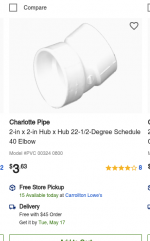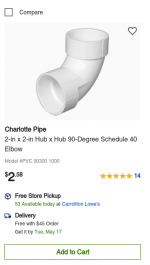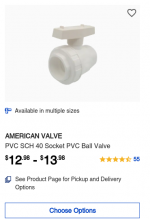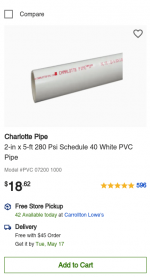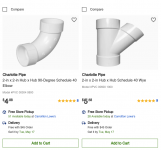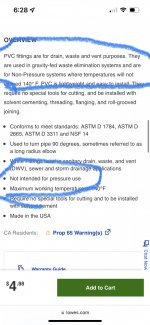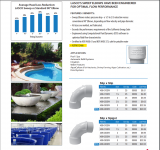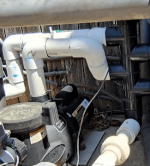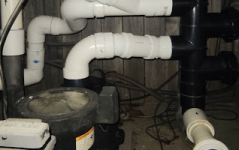I had to read some study on how to design and build dust collector system for my workshop garage and I thought since the water obeying same law as air, so I may be able to improve water flow on my pool by bypassing the heater on return line(Skipping seven elbow) and replace two 90 degree elbows with two 22.5 degree connection.
So I did this experiment with some $1~$3 connection, one $14 2" ball valve, 2' pipe. Fitting those non-90 degree connection in 3 dimensions and different height was a big challenge and close to impossible.
Took me two afternoon and tree trip to home store to make it happen.
Before:
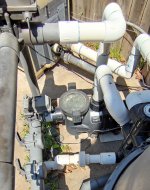
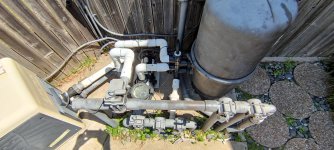
After:
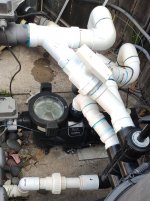
I have about 10 psi less on filter gauge with the new path and this 10 psi is gold for me because even after a week without backwash the gauge read 25 psi and I visually guess it's at least twice water movement on my pool.
Fitting this new connection between two fixed side wasn't easy job specially with 5 second window for glue from applying to hardening.
I messed on point and had to cover it with cutout from 4" pipe to stop the leak.
The high water flow that I see on my lion mouth, vacuum and spa fountain is worth the effort.
I just wonder why the pool builders don't care for this basic physic on design it.
I can explain it move if the picture is not clear what I'm done.
So I did this experiment with some $1~$3 connection, one $14 2" ball valve, 2' pipe. Fitting those non-90 degree connection in 3 dimensions and different height was a big challenge and close to impossible.
Took me two afternoon and tree trip to home store to make it happen.
Before:


After:

I have about 10 psi less on filter gauge with the new path and this 10 psi is gold for me because even after a week without backwash the gauge read 25 psi and I visually guess it's at least twice water movement on my pool.
Fitting this new connection between two fixed side wasn't easy job specially with 5 second window for glue from applying to hardening.
I messed on point and had to cover it with cutout from 4" pipe to stop the leak.
The high water flow that I see on my lion mouth, vacuum and spa fountain is worth the effort.
I just wonder why the pool builders don't care for this basic physic on design it.
I can explain it move if the picture is not clear what I'm done.
Last edited:


